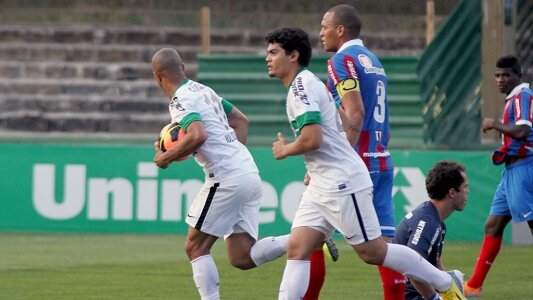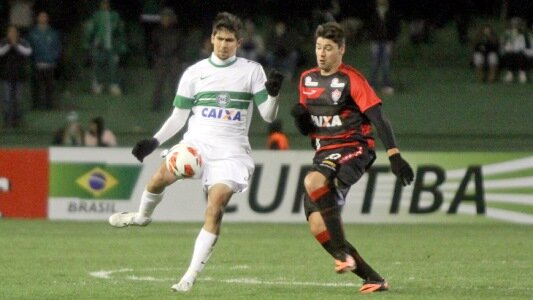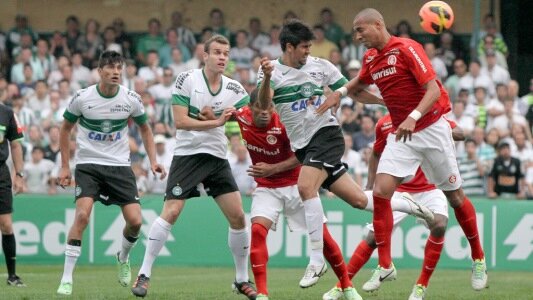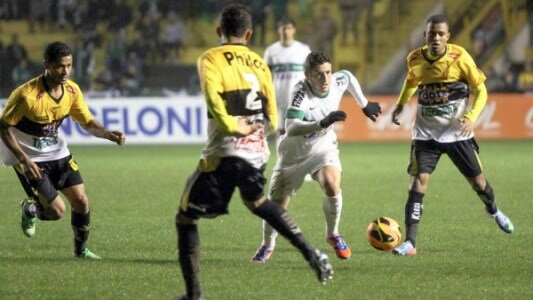Notícias em destaque
Ainda sem Leandro Almeida, Coritiba perde para o Flamengo em casa (vídeo)

Coxa foi derrotado por 2 a 0 no Estádio Couto Pereira. Almeida deve voltar no domingo, no clássico contra o Atlético/PR
03 Out 2013
Com Leandro Almeida, Coritiba tem aproveitamento de 53%; sem ele, número cai para 29%

Números levantados pelo portal Footstats comprovam que o Coritiba perdeu rendimento após a lesão do camisa 44
24 Set 2013
Sem Leandro Almeida, Coritiba apenas empata com o Bahia em casa (vídeo)

Com uma lesão no tornozelo, Leandro Almeida ainda fica de fora da equipe por duas semanas. Em campo, Alex buscou o empate nos acréscimos
16 Set 2013
Leandro Almeida tem lesão confirmada e desfalca o Coritiba por três semanas

Zagueiro do Coxa se machucou após uma pancada na canela, sofrida no jogo contra o Internacional, no último domingo
03 Set 2013
Coritiba empata com Internacional; Leandro Almeida sai de campo machucado (vídeo)

Equipe colorada teve um jogador expulso, mas conseguiu se defender. Leandro Almeida machucou, mas ficou em campo porque o Coritiba já tinha feito três substituições
01 Set 2013
Nos pênaltis, Coritiba passa pela primeira vez na história para a fase internacional da Copa Sul-Ame…

Equipe de Leandro Almeida venceu o Vitória por 1 a 0, em casa, e precisou de seis cobranças de penalidades para chegar às oitavas-de-final da competição
28 Ago 2013
Coritiba perde para o Criciúma por 2 a 1

Leandro Almeida retornou à equipe, após ser poupado no jogo de quarta-feira, pela Copa do Brasil, mas o Coxa foi surpreendido pela equipe catarinense
25 Ago 2013
Sem Leandro Almeida, Coritiba perde para o Corinthians em jogo polêmico (vídeo)

Gol da equipe paulista saiu de um pênalti mal marcado. Com dores nas costas, Almeida ficou de fora da partida
19 Ago 2013
Coritiba tropeça em casa diante da Portuguesa; Leandro Almeida sai de campo lesionado

Lusa saiu na frente e Coxa só conseguiu o empate nos acréscimos. A baixa da equipe foi o zagueiro Leandro Almeida, que tomou uma pancada nas costas
15 Ago 2013





